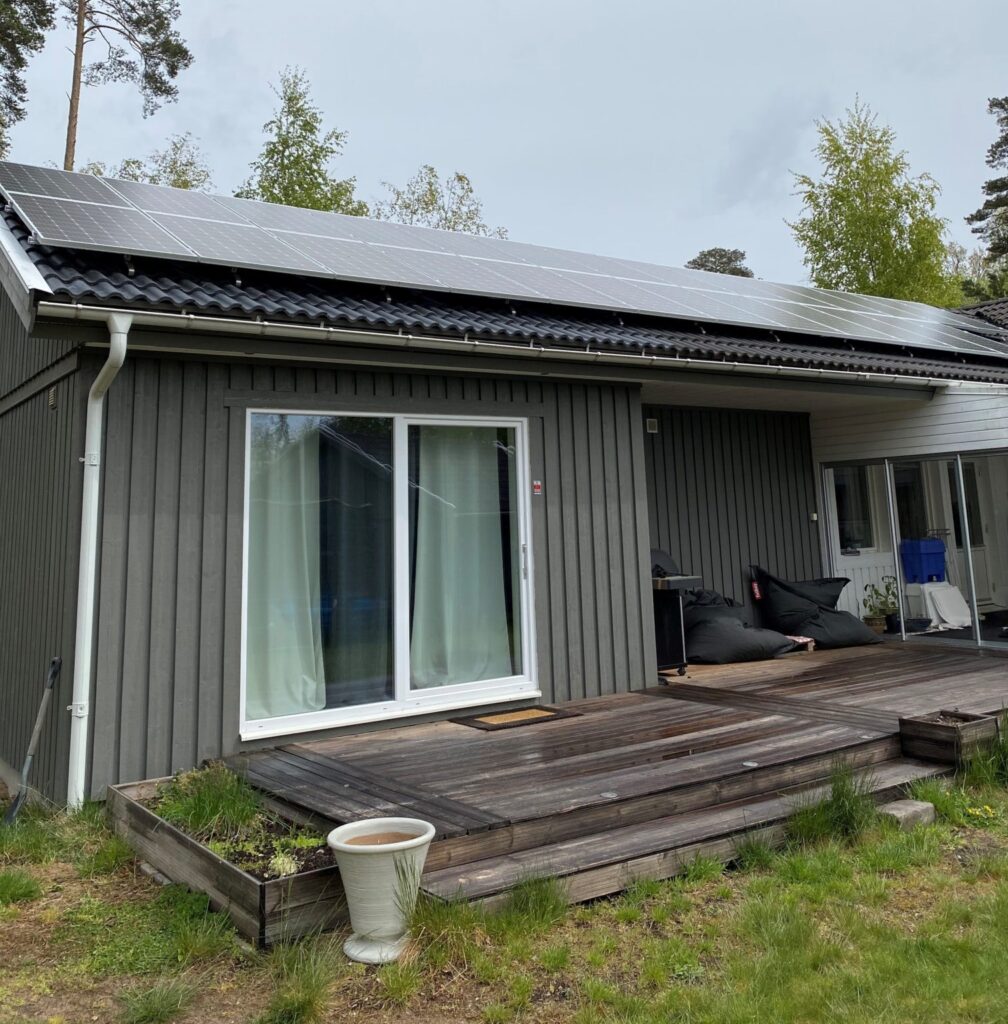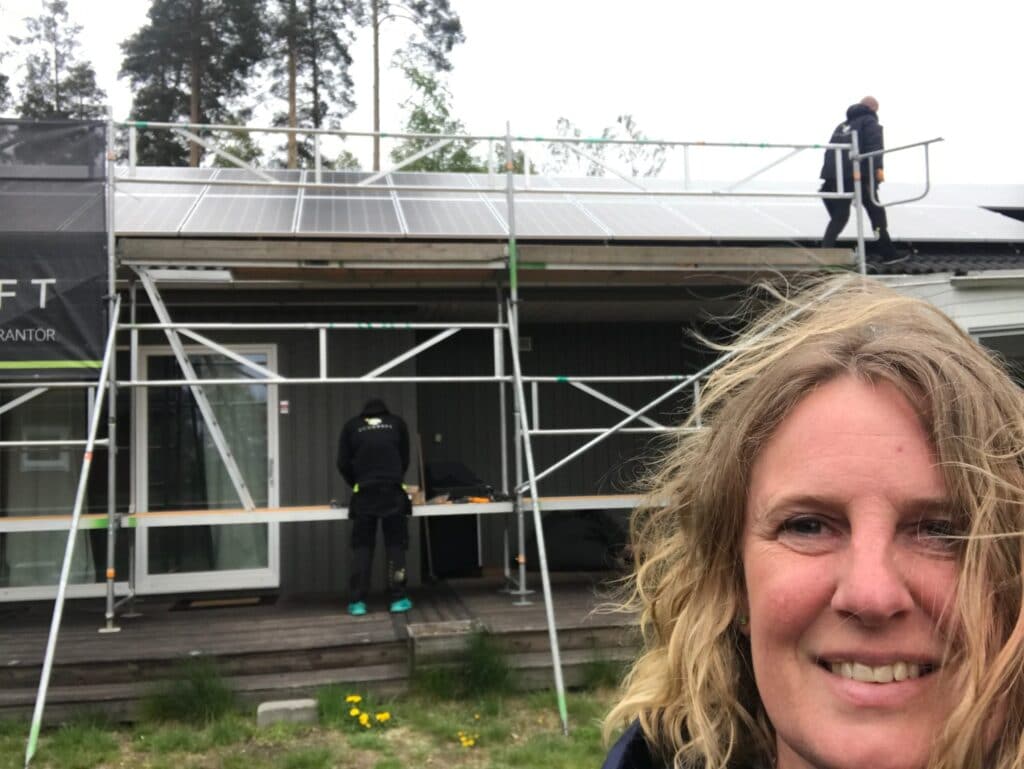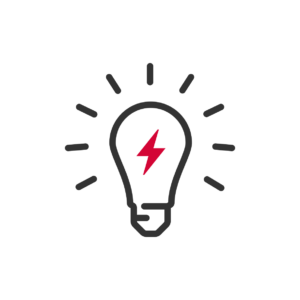How much solar energy can you produce during a blackout? Without energy storage, the answer is none. For Linda in Eskilstuna, this was a surprise that needed to be solved early on in her journey towards a new home solar energy system.
“You could say I´m a bit of an energy nerd, so it just felt like this was the right time. It should have happened long ago.”
Linda
Linda has spent more time than most thinking about energy issues. For the past decade, she has worked in energy departments at both the local and national level, where the ongoing transition to renewable energy has been at the top of the agenda. After a solar energy conference in early 2020, she decided the time had come to finally become an energy producer.
Her first discussions with electrical and solar installers led quickly to the question of power outages. “These were the early days of the coronavirus pandemic, which I thought might lead to some disruptions in the energy grid,” Linda explains. “I assumed that if there was an outage, then at least I could get a little energy from my solar panels. But this turned out not to be true. I learned that the system’s inverter runs on power from the grid, so if you don’t have backup power and there’s a blackout, the whole solar installation goes offline.”
Linda’s transformation tips #1
Don’t count on solar energy
during blackouts
“I learned that the system’s inverter runs on power from the grid, so if you don’t have backup power and there’s a blackout, the whole solar installation goes offline.”

Experiences with energy storage
Thanks to a 26-panel solar energy system and a 6 kWh energy storage system from Enequi, Linda’s off-grid solar production is now secured. She can also store the solar energy she produces during the daytime for use later at night. “I haven’t sat down to calculate all the figures, because for me it’s really the backup I was after,” says Linda. “It’s a bit of a hobby to be an energy producer, and now I have the most solar panels on our block. It’s kind of cool! I feel proud of my house.”
At the moment, Linda’s focus is on learning how the system works, starting with her overall household energy consumption. “I’ve learned what our total energy usage looks like at any moment,” she continues. “And I can see how much is coming from the grid compared to the solar panels.”
Linda’s transformation tips # 2
Learning is the best part
“I’ve worked in the energy sector for years, and I still have a lot to learn! I’ve learned what our total energy usage looks like at any moment, and I can see how much is coming from the grid compared to the solar panels.”

Looking ahead
Over the coming months, Linda will be adding a car charger to her energy storage system and is looking forward to the updated energy management app and energy nodes from Enequi. “I haven’t learned all the finesses yet,” she explains, “but I’m curious to learn more about our usage, like how much is the heating system consuming? It would be good to have more information on at least the major energy consumers in our house. I’d also like to learn more about the settings, for example, to make sure I don’t sell too much solar energy before the weather changes.”
Linda’s transformation tips # 3
Subsidies are great, but be prepared for paperwork
“It’s great that our government sees the need to incentivize solar and energy storage. It’s exactly what we need to move in the right direction. But be sure to plan and prepare! I have a huge stack of documents and applications for subsidies – it’s really a commitment.”
Lessons learned
Although her ultimate dream is to have enough solar panels and energy storage to go completely off-grid, Linda admits that this remains quite a stretch for most Swedish households. “To be self-sufficient would be ideal,” she explains, “but for that to become a reality for us, we would need some kind of seasonal storage. The good news is we’re going more and more towards passive energy homes, and solar panels and batteries are becoming more affordable. In the long run, we’re going to have to change how we think about electricity. As we transition to more wind and solar in the grid, we’re all going to be more dependent on energy storage in one form or another.”
Solar panels
Energy storage system
